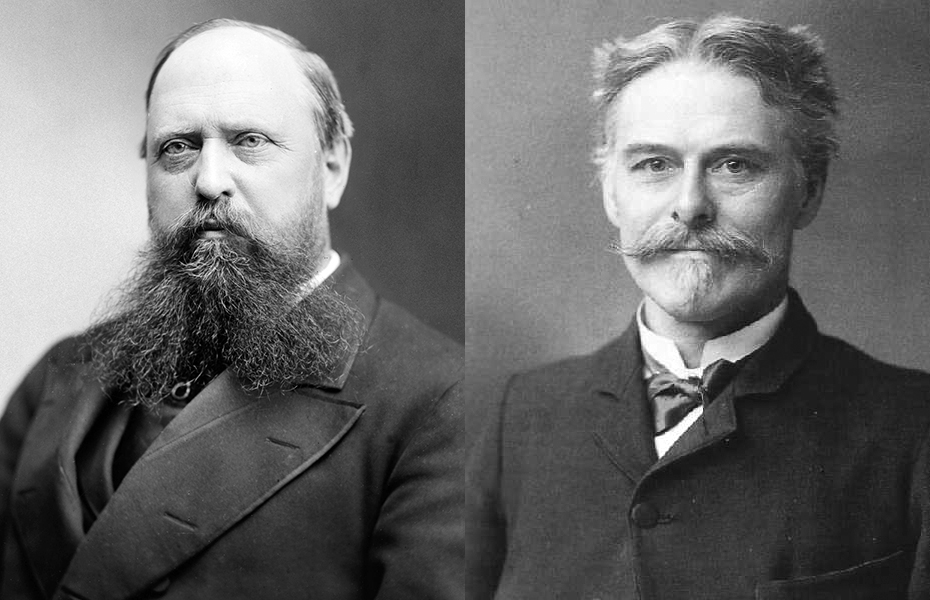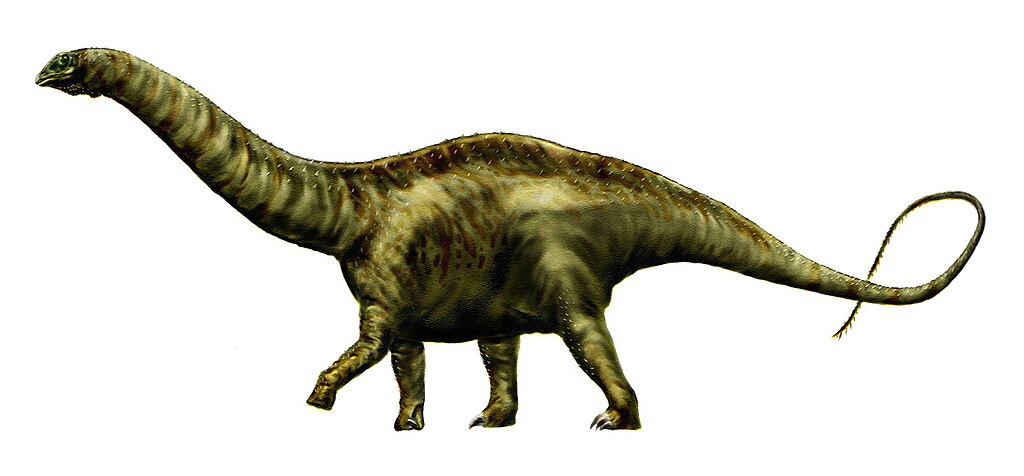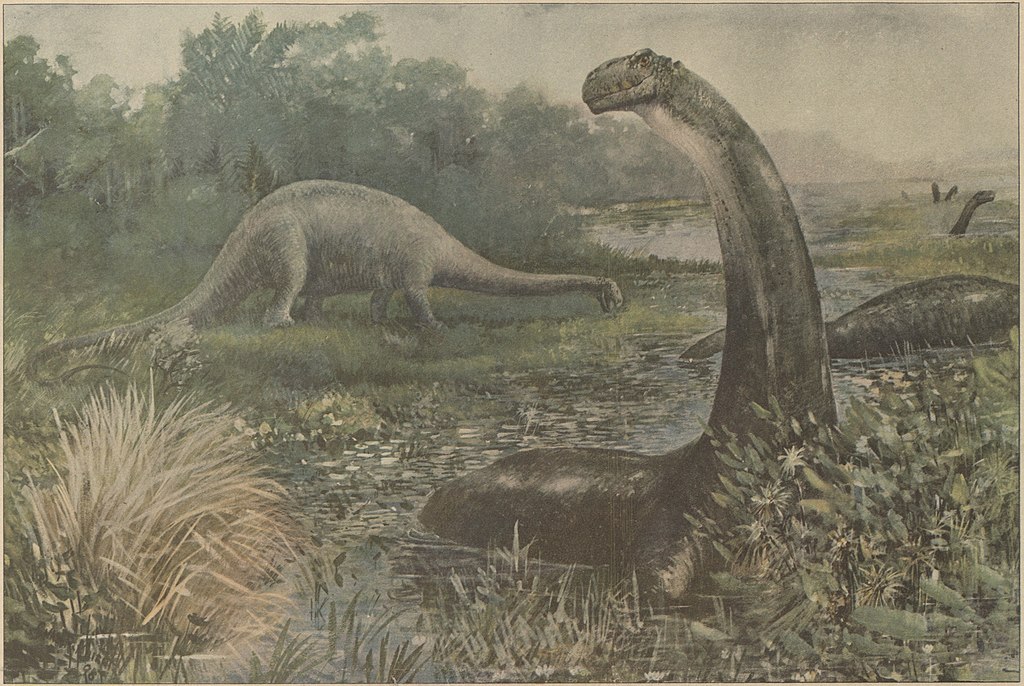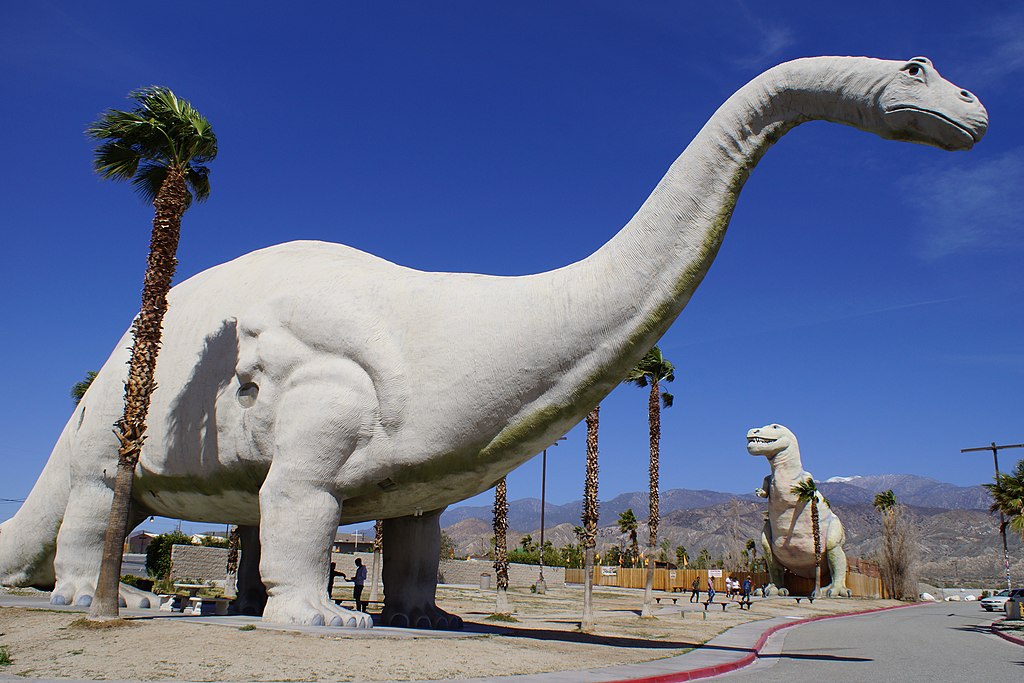Few dinosaurs have experienced a scientific journey as remarkable as Brontosaurus. Once a household name and cultural icon, this massive long-necked dinosaur was famously declared a scientific mistake in the early 20th century, seemingly erased from the paleontological record. For decades, scientists insisted the creature never truly existed as a distinct genus. Then, in a dramatic twist that made headlines around the world in 2015, Brontosaurus was scientifically resurrected and restored to its rightful place in dinosaur taxonomy. This scientific reversal represents one of the most fascinating stories in paleontology—a tale of discovery, dismissal, and ultimate vindication that spans more than a century of changing scientific understanding.
The Original Discovery: Yale and the Bone Wars

The Brontosaurus story begins during the infamous “Bone Wars,” a period of intense fossil-hunting rivalry between paleontologists Othniel Charles Marsh and Edward Drinker Cope in the late 19th century. In 1879, Marsh, working at Yale University, described and named Brontosaurus excelsus based on a nearly complete skeleton discovered in Wyoming’s Morrison Formation. The name he chose—Brontosaurus, meaning “thunder lizard”—perfectly captured the immense size of this sauropod dinosaur, which he estimated to be over 70 feet long. This spectacular find quickly captured public imagination, becoming one of the most recognizable dinosaurs of the era. The original specimen was promptly mounted at Yale’s Peabody Museum of Natural History, further cementing the thunder lizard’s place in both scientific literature and popular culture.
The Controversial Erasure: Apatosaurus Takes Over

The downfall of Brontosaurus began in 1903 when paleontologist Elmer Riggs published a paper arguing that Brontosaurus was not distinct enough from Apatosaurus—a genus Marsh had named two years earlier in 1877—to warrant its own genus. According to taxonomic rules, when two named animals are determined to be the same genus, the older name takes precedence. Since Apatosaurus was named first, Riggs reclassified Brontosaurus excelsus as Apatosaurus excelsus, effectively eliminating the Brontosaurus genus from scientific classification. This technical reclassification represented what should have been the scientific end of Brontosaurus. The scientific community gradually accepted this change, and by the mid-20th century, serious paleontologists considered “Brontosaurus” to be merely an outdated synonym for Apatosaurus, no longer valid in formal scientific contexts.
Cultural Persistence: Why Brontosaurus Never Really Disappeared

Despite its official “demotion” in scientific circles, Brontosaurus never truly disappeared from public consciousness. The name had already become deeply ingrained in popular culture, appearing in everything from educational materials to advertisements and children’s toys. The U.S. Postal Service even issued a Brontosaurus stamp in 1989, despite protests from paleontologists about its scientific inaccuracy. Natural history museums continued to use the name on their displays for decades after the scientific consensus had shifted, partly because the name was more familiar to visitors. This cultural persistence created a unique situation where many people grew up learning about a dinosaur that, according to the scientific establishment, didn’t technically exist. The beloved thunder lizard lived on in the public imagination even as paleontologists insisted on calling it Apatosaurus.
The Infamous Head Mistake: A Century of Misrepresentation

Adding to the Brontosaurus controversy was a significant error in its early reconstructions. When Marsh mounted the first Brontosaurus skeleton, he was missing the creature’s skull, so he substituted what was believed to be a suitable replacement—a skull from another sauropod that we now know was Camarasaurus. This incorrect skull, with its more robust, square shape, became the standard depiction of Brontosaurus for decades. The error wasn’t conclusively corrected until the 1970s, when scientists determined that Apatosaurus (including the specimens formerly known as Brontosaurus) actually had a more slender, horse-like skull similar to Diplodocus. This skull mistake perpetuated misconceptions about the dinosaur’s appearance and added another layer of scientific confusion to the Brontosaurus saga. For nearly a century, most illustrations and museum mounts of Brontosaurus featured the wrong head entirely.
The Scientific Resurrection: The 2015 Study That Changed Everything

In 2015, the paleontological world was stunned when an exhaustive study published in the journal PeerJ reexamined the Apatosaurus and Brontosaurus fossils using advanced statistical methods and comprehensive anatomical analysis. The research team, led by Emanuel Tschopp, examined 477 different physical features across 81 individual specimens. Their painstaking analysis revealed that the differences between Apatosaurus and Brontosaurus were significant enough to separate them into distinct genera after all. The study concluded that Brontosaurus exhibited enough unique anatomical features to be considered its own genus, separate from Apatosaurus. This scientific bombshell effectively resurrected Brontosaurus as a valid genus more than a century after it had been supposedly invalidated. The paper represented one of the most remarkable reversals in modern paleontological history.
Anatomical Distinctions: What Makes Brontosaurus Unique

The 2015 study identified several key anatomical differences that justified separating Brontosaurus from Apatosaurus. Brontosaurus had a more slender build compared to the more robust Apatosaurus, with differences particularly notable in the shoulder blades, pelvis, and vertebrae. The neck vertebrae of Brontosaurus were less complex than those of Apatosaurus, lacking some of the elaborate ridges and hollows found in its cousin. Brontosaurus also had a slightly higher and less wide hip structure. While both belonged to the same family (Diplodocidae) and shared many similarities as massive long-necked herbivores, these consistent anatomical differences across multiple specimens supported their classification as separate genera. The distinctions, while subtle to the untrained eye, were significant enough in the context of sauropod anatomy to warrant taxonomic separation.
The Three Species: Diversity Within Brontosaurus

The 2015 reclassification not only resurrected the Brontosaurus genus but also recognized three distinct species within it. Brontosaurus excelsus, the original species named by Marsh, remained the type species and most well-known member of the genus. The research also classified Brontosaurus parvus, previously thought to be an Apatosaurus species, as the second valid Brontosaurus species. It was generally smaller than B. excelsus with some distinct anatomical features. The third recognized species, Brontosaurus yahnahpin (formerly classified as “Eobrontosaurus”), was the most recently discovered, having been found in Wyoming in 1994. Each species showed slight variations in size, proportions, and anatomical details while maintaining the overall Brontosaurus characteristics. This diversity within the genus highlighted how complex sauropod evolution had been during the Late Jurassic period.
Life and Habitat: Understanding the Real Thunder Lizard

Brontosaurus lived approximately 155 to 152 million years ago during the Late Jurassic period, primarily in what is now the western United States. These massive herbivores inhabited a semi-arid environment with seasonal wetlands and forests, where they likely fed on ferns, conifers, and other vegetation, using their long necks to reach high into trees or across wide areas of lower plants. Adult Brontosaurus specimens measured about 72 feet long and weighed around 15-17 tons, making them one of the larger sauropods of their time, though not quite as massive as later titans like Argentinosaurus. Their relatively light, hollow vertebrae and long tails helped balance their enormous bodies and lengthy necks. Brontosaurus likely lived in herds for protection against predators like Allosaurus, with fossil evidence suggesting they may have traveled in family groups or age-segregated herds.
Scientific Methodology: How Modern Techniques Changed the Verdict

The resurrection of Brontosaurus illustrates how advances in scientific methodology can transform our understanding of long-established classifications. The 2015 study employed cladistics—a method of classifying organisms based on shared derived characteristics—along with sophisticated statistical analysis to evaluate hundreds of anatomical features across dozens of specimens. This approach represented a far more rigorous and comprehensive assessment than was possible in Riggs’ time in 1903. The researchers used a technique called computational phylogenetics, which employs algorithms to analyze massive datasets and identify patterns that human observation might miss. Digital modeling and 3D scanning of fossils allowed for more precise comparisons of subtle anatomical differences. These modern techniques enabled scientists to detect meaningful distinctions that earlier methods simply couldn’t identify, demonstrating how scientific consensus can evolve as technology and methodology improve.
Public Reaction: Celebration of a Beloved Dinosaur’s Return

News of Brontosaurus’s scientific resurrection in 2015 generated excitement far beyond paleontological circles, becoming one of the rare taxonomic studies to make international headlines. Major news outlets around the world covered the story, often with headlines expressing delight at the return of a beloved dinosaur. Social media erupted with celebratory posts, memes, and nostalgic reflections from people who had grown up learning about Brontosaurus before being told it “didn’t exist.” Many expressed a sense of vindication, having never fully accepted the creature’s demotion despite what they had been taught in science classes. Museums began updating their signage and educational materials, some quite proudly announcing the “return” of Brontosaurus. The public reaction revealed how deeply certain dinosaurs are embedded in cultural consciousness and how emotional the connection can be between society and these prehistoric creatures.
Ongoing Debates: Not All Scientists Are Convinced

Despite the comprehensive nature of the 2015 study, not all paleontologists immediately accepted the resurrection of Brontosaurus. Some researchers expressed skepticism about whether the anatomical differences identified were truly significant enough to justify separate genera rather than representing normal variation within a single genus. Others questioned aspects of the methodology, suggesting that different statistical approaches might yield different taxonomic boundaries. A few critics pointed out that the line between species and genera is inherently somewhat arbitrary in paleontology, especially when dealing with closely related forms. This ongoing scientific debate illustrates how taxonomy remains a dynamic field where consensus evolves gradually. The Brontosaurus case continues to serve as an important example of how classification is not always black and white, but rather represents scientists’ best attempts to organize the complex spectrum of biological diversity.
Lessons for Science: What Brontosaurus Teaches About Scientific Process

The Brontosaurus saga offers valuable insights into how science actually works. Rather than being a straightforward march of progress, scientific understanding often involves reversals, reevaluations, and the overturning of established ideas when new evidence or analytical techniques emerge. The case demonstrates the self-correcting nature of science, where even century-old conclusions can be revised when better data becomes available. It also highlights the sometimes arbitrary nature of taxonomic classifications, which represent human attempts to impose order on the continuous spectrum of evolutionary relationships. The story serves as a reminder of the provisional nature of scientific knowledge—what we “know” is always subject to revision. Perhaps most importantly, the Brontosaurus case illustrates how science at its best remains open to new evidence, even when that evidence challenges longstanding consensus.
Cultural Impact: From Sinclair Oil to The Flintstones

Few dinosaurs have permeated popular culture as thoroughly as Brontosaurus, despite—or perhaps because of—its controversial scientific status. The dinosaur became the mascot of Sinclair Oil in the 1930s, appearing on the company’s iconic green logo and in numerous advertisements, though they called it a “Brontosaurus” long after science had reclassified it. The creature featured prominently in “The Flintstones” as Dino, the family’s pet dinosaur. Countless children’s books, toys, and educational materials continued to use the name Brontosaurus even during its scientific exile. Director Steven Spielberg deliberately called the long-necked dinosaurs in Jurassic Park “Brachiosaurus” rather than “Brontosaurus” specifically because of the naming controversy. The cultural resilience of Brontosaurus, even when scientifically discredited, speaks to the deep connection people form with certain dinosaurs and how popular names can sometimes outlast scientific consensus.
The Future of Brontosaurus: What’s Next for the Thunder Lizard?

The future of Brontosaurus classification remains an evolving story as paleontology continues to advance. New fossil discoveries could further clarify the relationships between different sauropod genera or potentially challenge the current classification once again. Ongoing development of technological tools, including CT scanning, microscopic analysis of bone tissue, and increasingly sophisticated computational models, may reveal new insights about Brontosaurus anatomy and lifestyle. Paleontologists continue to study how these massive animals grew, moved, and functioned in their Jurassic ecosystems. The naming controversy itself has become an invaluable teaching tool for explaining how science works and evolves over time. Whatever the future holds for its classification, Brontosaurus has secured its place not just in the fossil record but in the story of science itself—a perfect case study of how scientific understanding develops, changes, and sometimes comes full circle.
The remarkable journey of Brontosaurus—from discovery to dismissal to triumphant return—stands as one of paleontology’s most fascinating stories. It reminds us that science is not a static collection of facts but a dynamic process of discovery and reinterpretation. The thunder lizard’s resurrection demonstrates how new technologies and methodologies can transform our understanding of the past, sometimes by confirming what seemed intuitive all along. After more than a century of controversy, Brontosaurus has reclaimed its identity, validating generations of dinosaur enthusiasts who never quite accepted its disappearance. As we continue to unearth new fossils and develop better tools for analyzing them, the story of Brontosaurus serves as a humbling reminder that even our most established scientific “facts” remain open to revision—and sometimes, the name that felt right all along turns out to be scientifically right after all.



